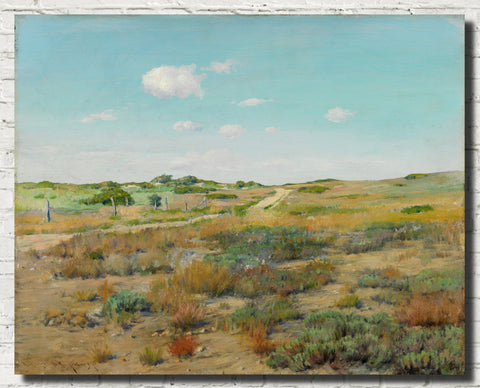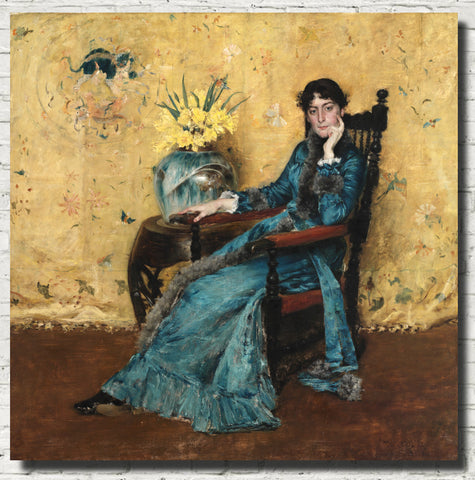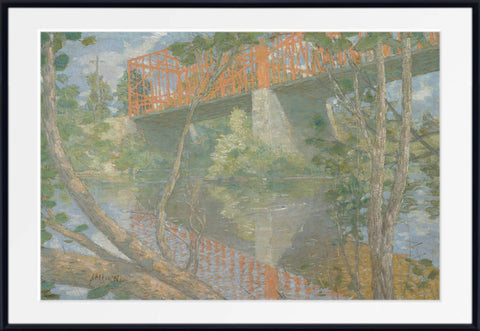Table of Contents:[hide]
Introduction
Renowned as a leading figure in American art history, William Merritt Chase's influence spans the realms of Impressionism, portraiture, and art education. In this comprehensive exploration, we delve into the life, works, and lasting impact of William Merritt Chase.
1. Early Life and Education
Born on November 1, 1849, in Williamsburg, Indiana, William Merritt Chase exhibited a passion for art from a young age. Chase's artistic journey officially commenced with his enrollment at the National Academy of Design in New York City. His early exposure to the vibrant art scene laid the foundation for his future contributions.
2. American Impressionism: Chase's Artistic Style
Chase is often celebrated for his pivotal role in the American Impressionist movement. Characterized by loose brushwork, emphasis on light, and a vivid palette, his paintings captured the essence of the changing American landscape. Notable works, such as "Shinnecock Hills" and "Summer at Shinnecock Hills," exemplify Chase's mastery of the Impressionist technique.
2.1 Shinnecock Hills and Plein Air Painting
Shinnecock Hills, one of Chase's iconic paintings, showcases his fondness for plein air painting. This technique involved creating art outdoors, allowing artists to capture the immediacy of light and atmosphere. The Shinnecock Hills series, set in Long Island, became synonymous with Chase's dedication to capturing the beauty of American landscapes.
3. The Chase School and Art Education
An influential figure in the art education landscape, Chase founded the Chase School (later known as the New York School of Art). This institution played a crucial role in shaping the next generation of American artists. Chase's teaching philosophy emphasized a balance between traditional techniques and modern innovation, influencing countless students.
3.1 Legacy in Art Education
Chase's impact on art education endures through the success of his students, many of whom went on to achieve prominence in the art world. His approach to nurturing creativity within a structured environment continues to shape the curriculum of art institutions globally.
4. Portrait Painting: Capturing the Soul of the Subject
Chase's prowess in portraiture is evident in works such as "Portrait of Dora Wheeler" and "Alice Dieudonnée Chase." His ability to capture the unique personality and essence of his subjects contributed to his acclaim as a portraitist.
4.1 Tonalism in Portraiture
Chase's portraits often incorporate elements of Tonalism, a style characterized by a muted color palette and an emphasis on atmospheric effects. This technique adds depth and emotion to his portraits, making them timeless expressions of the human spirit.
5. New York Art Scene and Chase's Influence
Chase was a prominent figure in the dynamic New York art scene during the late 19th and early 20th centuries. His involvement in art societies and exhibitions contributed to the cultural vibrancy of the city.
5.1 The Old Lyme Art Colony
Chase's influence extended beyond New York, reaching the Old Lyme art colony in Connecticut. As a founding member of the colony, Chase played a key role in fostering a supportive artistic community, leaving an indelible mark on the region's artistic legacy.
Frequently Asked Questions (FAQs)
Q1: Who was William Merritt Chase?
Answer: William Merritt Chase (1849-1916) was an American painter, teacher, and key figure in the American Impressionist movement. His diverse body of work includes landscapes, portraits, and genre scenes.
Q2: What is American Impressionism?
Answer: American Impressionism is an art movement characterized by the use of loose brushstrokes, emphasis on light and color, and a focus on capturing the immediate effects of the changing environment. Chase played a pivotal role in popularizing this movement in the United States.
Q3: What is plein air painting?
Answer: Plein air painting is a technique where artists paint outdoors, directly capturing the scenes and light of the natural environment. Chase, particularly in his Shinnecock Hills series, was known for his dedication to plein air painting.
Q4: How did William Merritt Chase contribute to art education?
Answer: Chase founded the Chase School (later known as the New York School of Art), significantly influencing art education. His approach, balancing traditional techniques with modern innovation, continues to shape art education methodologies worldwide.
Q5: What is Tonalism in art?
Answer: Tonalism is an art movement characterized by a muted color palette and an emphasis on atmospheric effects. Chase incorporated Tonalist elements, particularly in his portrait paintings, adding depth and emotion to his subjects.
Q6: What is the significance of the Shinnecock Hills series?
Answer: The Shinnecock Hills series is significant as it showcases Chase's dedication to plein air painting and his ability to capture the beauty of the American landscape. It remains an iconic representation of American Impressionism.
Conclusion
William Merritt Chase's legacy endures through his diverse and influential body of work, his role in the American Impressionist movement, and his impact on art education. As we explore his life and contributions, we gain a deeper appreciation for the artist who left an indelible mark on the canvas of American art.
Prints and Canvas Panels
Related Articles
American Impressionism
Impressionism






